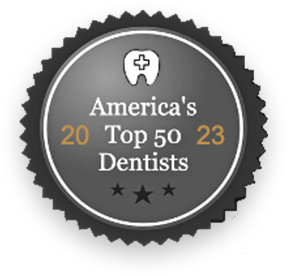
Fixed BRIDGEWORK
Premium Dental Care
dental bridges
When it comes to replacement of a missing tooth an implant is our gold standard of care, but not all patients are a good candidate. In those cases, a bridge is an ideal treatment option. A dental bridge is a fixed dental restoration used to replace one or more missing teeth. It consists of one or more artificial teeth, known as pontics, which are anchored in place by crowns on the adjacent natural teeth or dental implants.
Bridges can be made from various materials like porcelain, ceramic, metal alloys, or a combination of these. They not only help restore the appearance of your smile but also improve functionality by allowing you to chew and speak properly.
The process of getting a dental bridge involves preparing the adjacent teeth by reshaping them to accommodate the crowns that will hold the bridge in place. Impressions of your teeth are taken to create a custom-fit bridge that matches the shape and color of your natural teeth.
Dental bridges offer several benefits:
- Restored Functionality: Bridges replace missing teeth, restoring the ability to chew and speak properly. This can improve your overall quality of life by allowing you to eat a wider variety of foods and speak without impediments.
- Aesthetics: They can greatly enhance the appearance of your smile by filling in gaps left by missing teeth. Bridges are customized to match the color and shape of your natural teeth, resulting in a seamless and natural-looking smile.
- Preservation of Natural Teeth: Unlike some other dental restorations, bridges utilize adjacent teeth for support rather than relying solely on implants. This can help preserve the structure and alignment of your natural teeth.
- Prevention of Teeth Shifting: When a tooth is missing, nearby teeth might gradually shift position, leading to alignment issues. Bridges prevent this shifting by filling the gap and maintaining the proper alignment of surrounding teeth.
- Improved Confidence: Restoring a complete smile often leads to increased confidence and self-esteem, allowing individuals to feel more comfortable and confident in social interactions.
- Durability: Dental bridges, when properly cared for, can be a long-lasting solution for missing teeth, providing functionality and aesthetics for many years.
Remember, the success and longevity of a dental bridge largely depend on proper oral hygiene and regular dental check-ups. Maintaining good oral habits can significantly extend the life of your bridge.
Bridges
A Maryland bridge, also known as a resin-bonded bridge or a Maryland-bonded bridge, is a type of dental bridge used to replace a missing tooth. It differs from traditional bridges in its method of attachment.
Rather than using crowns on adjacent teeth for support, a Maryland bridge uses a framework made of metal or porcelain that is bonded to the back of the adjacent teeth. This framework supports a false tooth (pontic) that fills the gap left by the missing tooth.
Maryland bridges have several advantages:
- Conservative Approach: They often require minimal alteration of adjacent teeth compared to traditional bridges, as they rely on bonding to the backs of adjacent teeth rather than placing crowns over them.
- Aesthetic Appeal: These bridges can offer good aesthetic results, especially if the framework is made from tooth-colored material like porcelain, creating a more natural appearance.
- Quick Installation: The procedure for fitting a Maryland bridge is relatively quick and might not require extensive preparation or multiple dental visits.
However, there are considerations:
- Strength: Maryland bridges might not be as sturdy as traditional bridges, especially for replacing molars or teeth subjected to heavy chewing forces.
- Longevity: They may not be as durable as other bridge types and might require replacement or repair sooner, especially in cases of excessive stress or wear.
- Risk of Debonding: There’s a risk of the bridge framework becoming loose or detached from the supporting teeth over time, which can necessitate repair or replacement.
We can advise whether a Maryland bridge is suitable for your specific dental situation based on factors like the location of the missing tooth, the condition of adjacent teeth, and your bite force.
Bridges
A cantilever bridge is another type of dental bridge used to replace missing teeth. Similar to traditional bridges, it involves a false tooth (pontic) that fills the gap left by a missing tooth. However, what sets a cantilever bridge apart is its method of support.
While traditional bridges use adjacent teeth on both sides of the gap for support, a cantilever bridge is anchored only on one side. This means that the pontic is supported by a dental crown or framework on one side of the gap, rather than being supported on both sides.
Benefits of a cantilever bridge include:
- Preservation of Tooth Structure: Like other bridges, a cantilever bridge helps maintain the alignment of teeth and prevents neighboring teeth from shifting into the gap. It achieves this while potentially preserving more of the natural tooth structure of the adjacent teeth compared to traditional bridges. Aesthetic Enhancement: Cantilever bridges can restore the appearance of your smile by filling in gaps caused by missing teeth.
However, there are some considerations:
- Force Distribution: Cantilever bridges may not be suitable for areas of the mouth subjected to significant biting forces. Since they are only supported on one side, they might be more prone to damage or dislodgement, especially when used for replacing molars or in areas where there’s considerable pressure during chewing.
- Risk of Strain: The single-sided support can create strain on the supporting tooth over time, potentially leading to complications or damage to that tooth. Limitations: Cantilever bridges are usually recommended for specific situations and may not be suitable for all cases of tooth replacement.
We will evaluate your oral health and discuss the best options for replacing missing teeth based on various factors such as the location of the missing tooth, the condition of adjacent teeth, and your bite force.
Bridge
An implant-supported bridge is a type of dental bridge that utilizes dental implants as the foundation to replace multiple missing teeth. Unlike traditional bridges that rely on neighboring teeth for support, implant-supported bridges are anchored in place by dental implants surgically placed into the jawbone.
Here’s how an implant-supported bridge generally works:
- Implant Placement: Dental implants, which are titanium posts, are surgically inserted into the jawbone at specific locations where teeth are missing. These implants serve as artificial tooth roots.
- Healing Period: After implant placement, a healing period is necessary, during which the implants integrate with the surrounding bone (osseointegration). This process ensures a stable foundation for the bridge.
- Bridge Attachment: Once the implants have integrated successfully, a customized bridge containing multiple artificial teeth (pontics) is securely attached to the implants. This bridge spans the gap left by the missing teeth.
Benefits of implant-supported bridges include:
- Enhanced Stability: Dental implants provide a stable and strong foundation for the bridge, making it highly secure and functional for chewing and speaking. Preservation of Bone: Implants stimulate the jawbone, preventing bone loss that commonly occurs when teeth are missing. This helps maintain bone density and facial structure.
- Improved Comfort: Implant-supported bridges feel more natural and comfortable compared to traditional removable dentures. They don’t rely on gums for support, reducing potential irritation.
- Longevity: When properly cared for, implant-supported bridges can last for many years, potentially even a lifetime.
However, getting an implant-supported bridge involves a multi-step process and might require sufficient bone density and healthy gums for successful implantation. Additionally, it typically takes several months from implant placement to the final attachment of the bridge due to the healing period required for osseointegration.
DENTAL BRIDGES
Caring for a dental bridge is essential to ensure its longevity and your oral health. Here are some tips on how to properly care for your dental bridge:
- Maintain Good Oral Hygiene: Brush your teeth at least twice a day using a soft-bristled toothbrush. Pay special attention to the areas around the bridge, ensuring you clean the pontic (false tooth) and the gum line where the bridge meets your gums.
- Floss Regularly: Flossing is crucial to remove food particles and plaque between the teeth and around the bridge. Use floss threaders or special floss designed for bridges and dental work to clean these areas thoroughly.
- Use Interdental Brushes or Water Flossers: Interdental brushes or water flossers can also be effective in cleaning hard-to-reach areas around the bridge.
- Rinse with Mouthwash: Using an antimicrobial mouthwash can help reduce bacteria and prevent gum disease. Rinse your mouth with mouthwash as directed by your dentist.
- Watch Your Diet: Be mindful of what you eat, especially when it comes to hard or sticky foods. Avoid biting on hard objects, as they can damage the bridge or surrounding teeth.
- Regular Dental Check-ups: Visit your dentist for routine check-ups and professional cleanings. Your dentist can monitor the condition of the bridge and address any issues before they become more significant problems.
- Avoid Habits That Can Damage the Bridge: Refrain from habits like biting your fingernails, chewing on pens, or using your teeth to open packages, as these can put unnecessary strain on the bridge and surrounding teeth.
- Protect Against Teeth Grinding: If you grind your teeth, discuss this with your dentist. They might recommend a nightguard to protect your teeth and the bridge from excessive wear.
- Follow Dentist’s Advice: If your dentist provides specific care instructions for your bridge, such as using particular dental products or techniques, follow their guidance diligently.

Premium dental care for Willowbrook, Hinsdale, Clarendon Hills, Downers Grove, Darien, Westmont, Western Springs, La Grange & Burr Ridge
40Years
Experience
I took my daughter to this dental office after she had a negative experience at another dental office. I researched dentists of hinsdale lake on my dental insurance site. Very positive experience.
We will be coming back to have more work completed.
-GAIL W.
Rate your experienceat our office
Contact Us
Please call our office or fill out the form below.
Please do not send confidential information using this form as it’s not considered private.